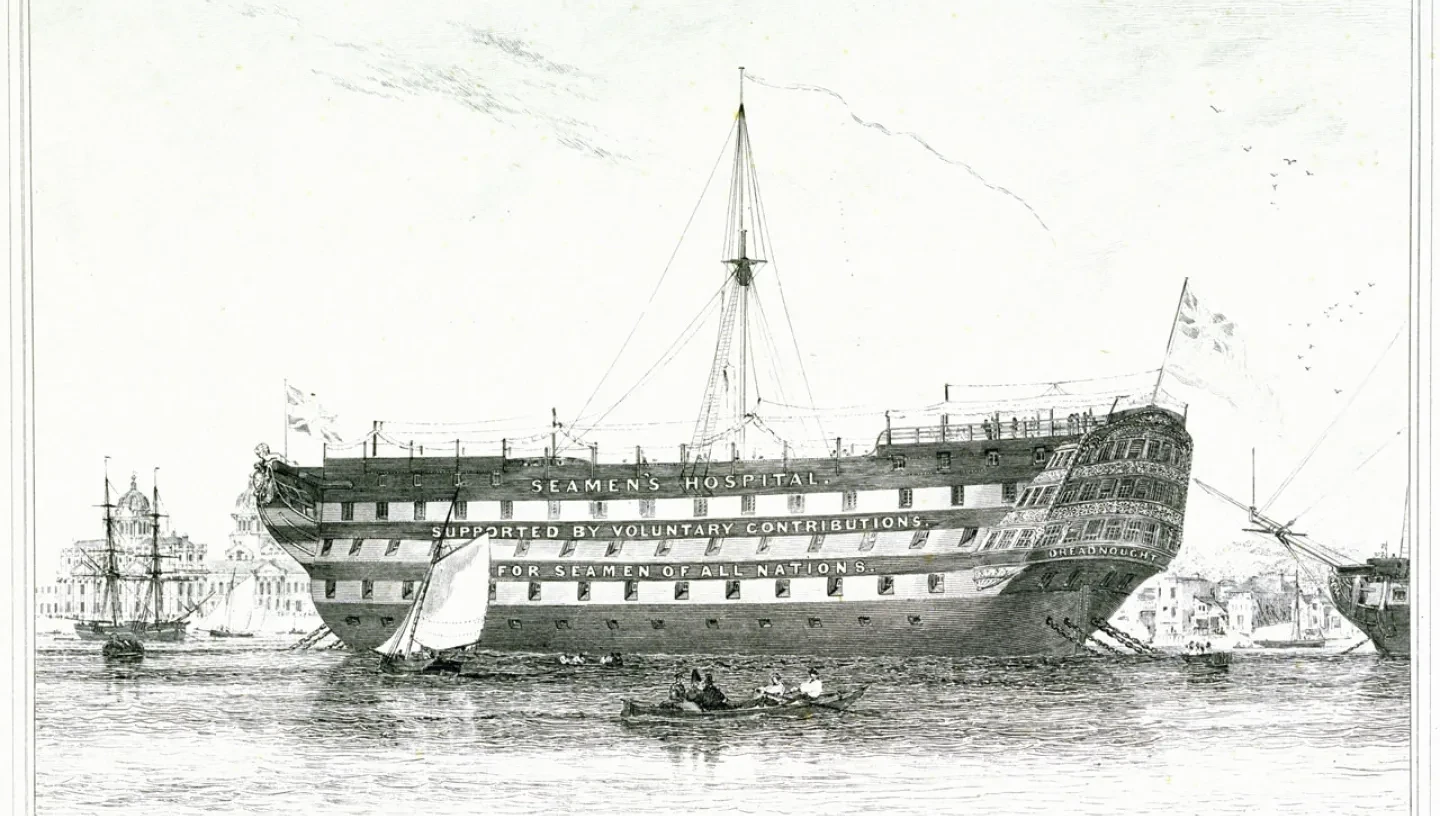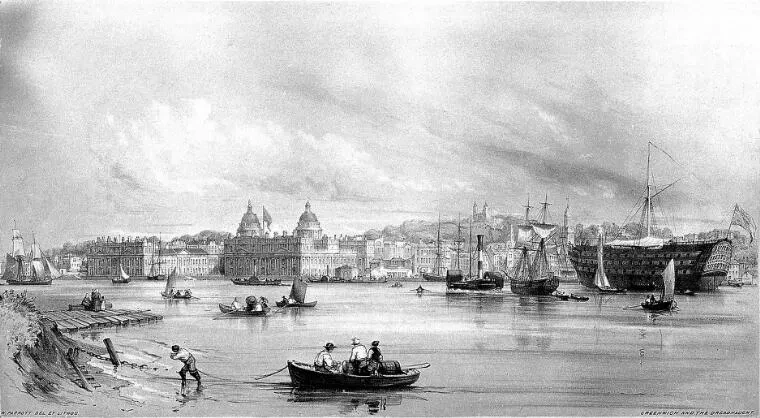
Get your sea legs ready! Join us on an historical journey into the medical side of seafaring...
Beginning afloat in 1826 on a worn out, leaking wooden warship, seafarers of all nations entering the busy port of London were treated at the Greenwich Dreadnought Seamen's Hospital for over one hundred and fifty years. What does their combined data tell us about the health of the seafaring community, the risks they faced and how medical theory was applied at sea?
To provide answers to these questions and many more, Royal Museums Greenwich is setting sail on a volunteer project to transcribe the hospital admission registers. When completed, HMS NHS: The Nautical Health Service will provide statistical data on the health of the maritime world, the prevalence of all kinds of medical complaints and show which of these posed the greatest threats to health at sea. The volunteer transcriptions will also provide an almost unlimited number of case studies on common injuries and occupational hazards relating to both sail and steam, their treatments and recovery times. If you enjoy deciphering old handwriting or have an interest in the history of medicine, this project is for you.
Seamen’s medical records at the Caird Library
The hospital records now held by the National Maritime Museum’s Caird Library record name, age and place of birth and rank, together with the last ship served on. Medical information includes dates of admission and discharge, medical complaint or injury, how the patient responded to treatment and whether they returned to a ship fit for duty, died or needed further treatment! Reflecting the international traffic of the port of London, the patients were seafarers from all over the globe. Casualties from local emergencies, among them women and children, were also treated, many from the near-by Greenwich hospital school. During the First World War, seamen mobilised into the Royal Naval Division fought in the trenches of the Western Front, bringing ghastly new additions to the list of injuries and medical complaints treated in the 150 years of the hospital’s existence.
The Nautical Health Service
HMS NHS: The Nautical Health Service is part of the Arts and Humanities Research Council (AHRC) funded collaborative research project entitled Engaging Crowds: Citizen research and heritage data at scale. Engaging Crowds is run in partnership with The National Archives, Royal Botanic Garden Edinburgh, and crowdsourcing platform provider Zooniverse, based at the University of Oxford. The project looks at what motivates online volunteering in the heritage sector.
In the first register from 1826, the most frequent maladies were scurvy, fevers and agues, dysentery, dropsy, and perhaps not surprisingly, venereal diseases, as well as all kinds of common injuries sustained on board sailing vessels. It will be interesting to see how this list compares to the last volume from 1933, just over a hundred years later, when ships had grown and steam had displaced sail. How did this affect the health of the maritime world?
When completed, the project will provide digital access to the records of the Dreadnought Seaman’s hospital to researchers from all around the world.
Want to know more? The project launches on 30 June, and we’d love you to join HMS NHS: The Nautical Health Service. Register with the platform provider, Zooniverse and type the project name into the search box, and join us on the journey!
